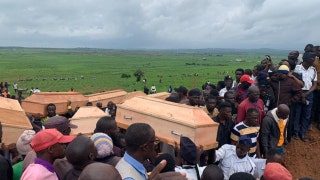In our interconnected world, where communicable diseases can spread so easily and rapidly, we need to be better able to anticipate and track the path of outbreaks. Think how helpful this capability would be for the coronavirus.
We know the current pandemic began in Wuhan, China, but we’re not exactly sure what happened from there. The Chinese Communist Party isn’t exactly being forthright with information to help America and other countries combat the virus.
This makes it clear how important it is to have the tools to anticipate how diseases spread, to give us advanced warning to prepare and information we need to be better equipped for future outbreaks.
NEWT GINGRICH: CORONAVIRUS MODELING – HOW OUR HYSTERICAL CULTURE LED TO THIS REACTION TO PANDEMIC
Fortunately for all of us, someone seems to have broken the code for thinking about a worldwide management system to anticipate communicable diseases. He is Dr. Kamran Khan, founder and CEO of BlueDot and an infectious disease physician. I decided to have Dr. Khan on this week’s episode of my podcast “Newt’s World.”
More from Opinion
As the second part of my ongoing series on China and the spread of the coronavirus, we discuss how to track the spread of the virus from Wuhan with fascinating new technology and remarkable methods of analysis.
Dr. Khan is building a digital, global early warning system for infectious diseases. This system is supported by four key pillars.
The first pillar is detection. Clearly, we need to be able to detect outbreaks early to give us time to respond swiftly and effectively. What we learned from the SARS outbreak of the early 2000s is that we can’t simply wait for reports from government agencies to act – a fact that the coronavirus has driven home.
The second pillar is dispersion. BlueDot compiles an astonishing amount of anonymous data from airlines and elsewhere to understand the flow of all aircraft around the world and monitor other ways in which a disease may disperse.
The third. pillar is disruption. Not every infection causes an outbreak. Dr. Khan and his team are constantly examining why some “embers” will catch fire and others will not. They look at the specific populations and environments these embers reach through travel, and how they interact with the microbes. What causes disruption that will trigger an outbreak? This is a constant work in progress.
The fourth pillar is dissemination of knowledge. Normally, the public health sector is first to learn about an outbreak. Then there is a trickle-down effect, and eventually, the rest of the health care community, the private sector, and the general public learn about it. Clearly this flow of information is flawed and needs to be changed so each of these groups knows what’s going on earlier, in order to help combat an outbreak.
CLICK HERE TO SIGN UP FOR OUR OPINION NEWSLETTER
Dr. Khan and I discuss in detail the spread of the coronavirus from Wuhan, with him applying his system to the current situation and sharing his experiences in trying to get the word out about the virus. We also discuss China’s response to the virus and how infections may have reached the U.S. by examining the flow of travel.
Dr. Khan uses big data, artificial intelligence and some of the most advanced digital tools at humanity’s disposal to make each pillar work. This early warning system will not only save lives; it will also save economies.
If we can take the appropriate measures to counter diseases before they get really bad, then we may not have to impose the kind of lockdowns that we’re all currently enduring.
CLICK HERE TO GET THE FOX NEWS APP
I hope you will listen to this week’s episode and learn about Dr. Khan’s work, which is not only fascinating but also essential in a post-coronavirus world.
And please look out for Part Three of my series on China and the coronavirus, in which I discuss how to hold the Chinese Communist dictatorship accountable for lying to the world about a local outbreak that soon became a global pandemic.
To read, hear, and watch more of Newt Gingrich’s commentary, visit Gingrich360.com.









































